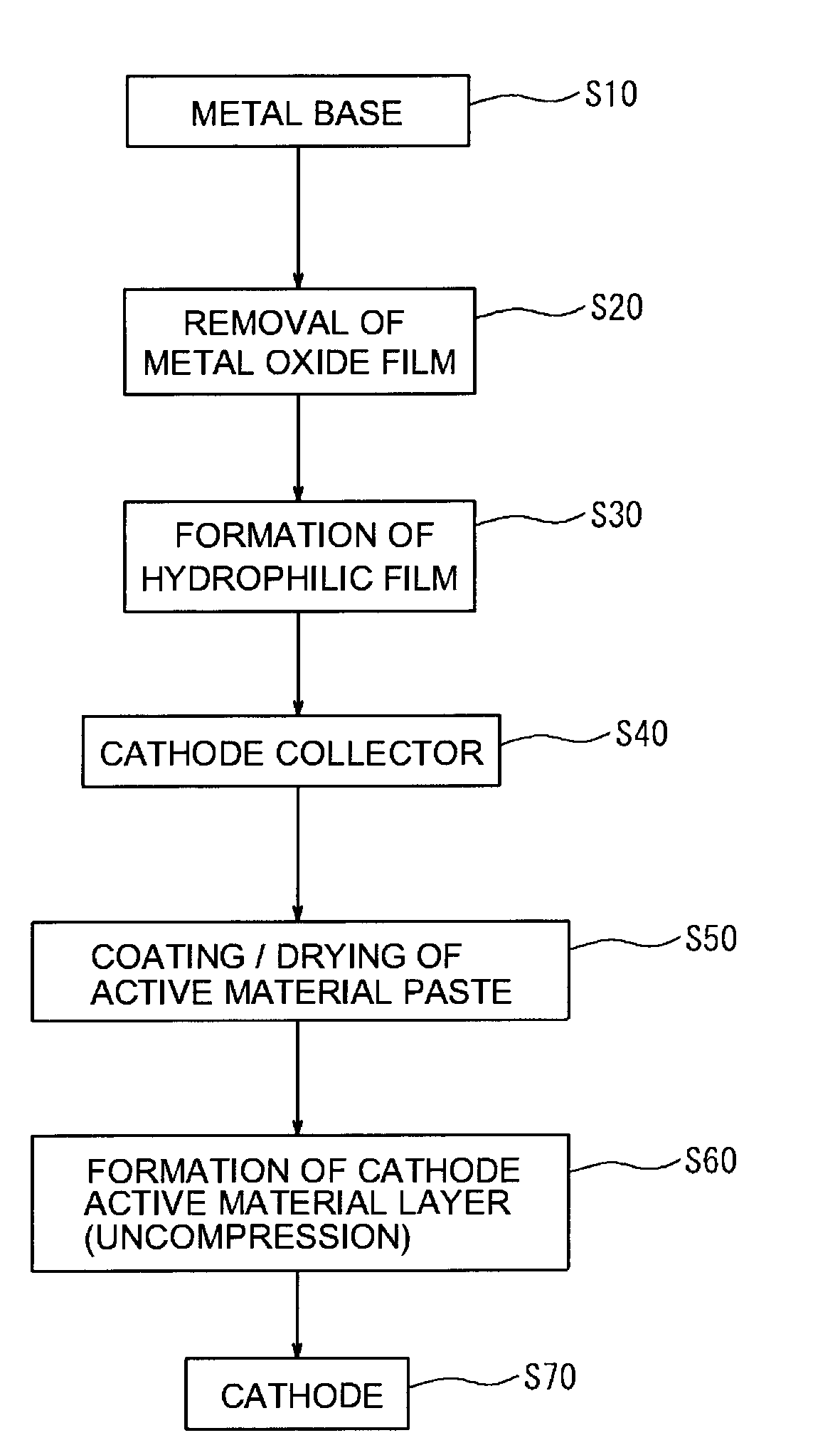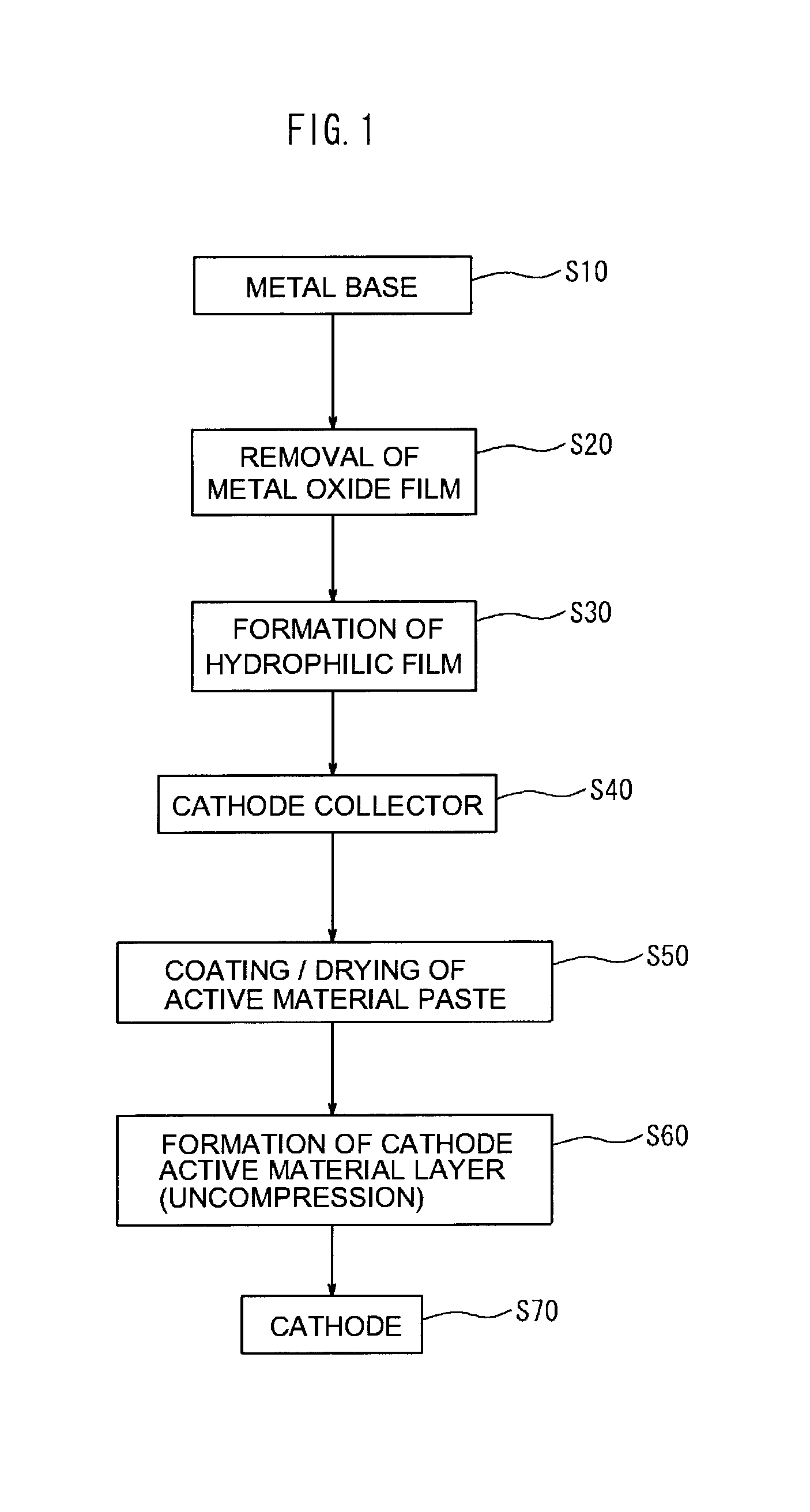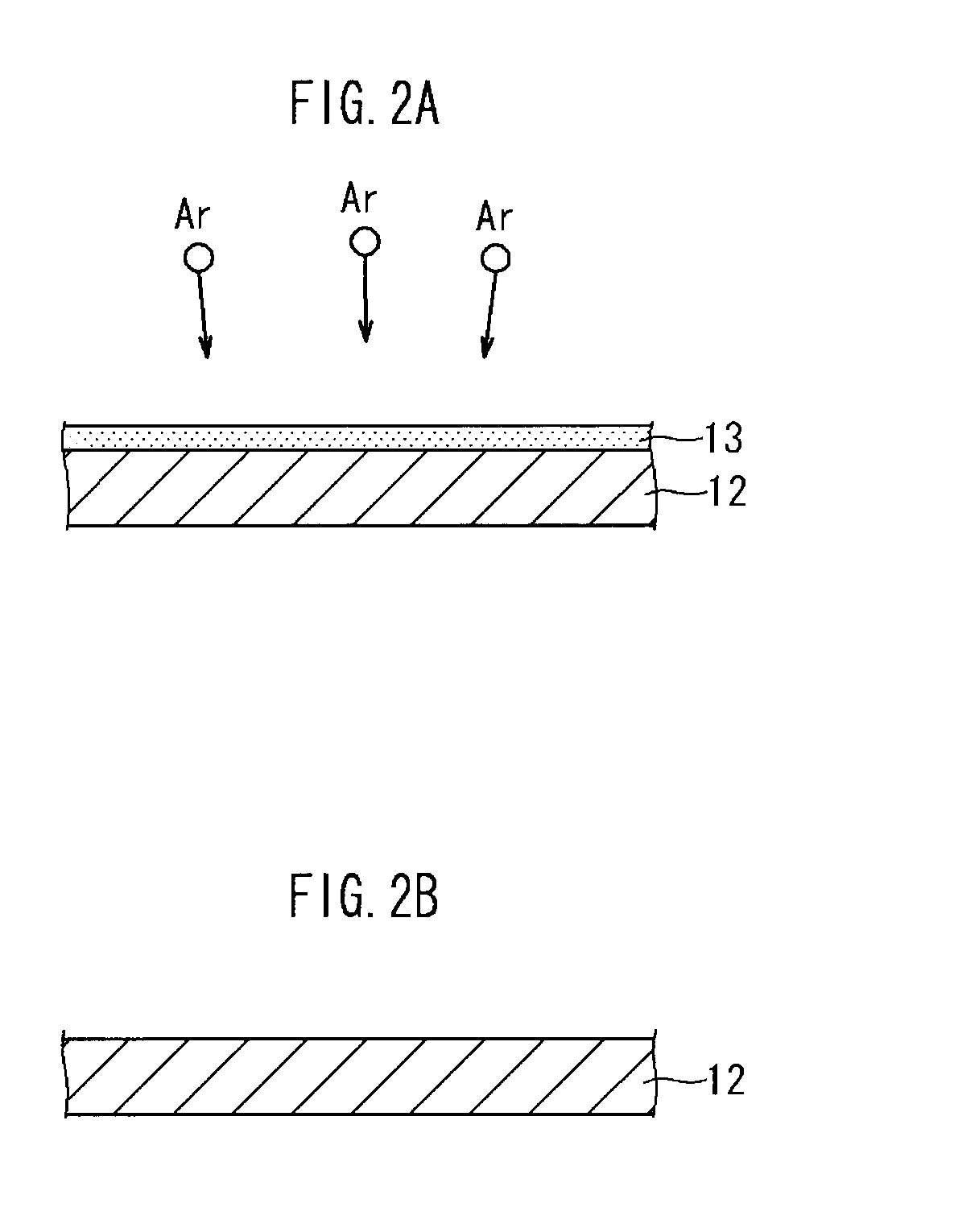Cathode and method for manufacturing the same
- Summary
- Abstract
- Description
- Claims
- Application Information
AI Technical Summary
Benefits of technology
Problems solved by technology
Method used
Image
Examples
Example
Test Example 1
Manufacturing of Cathode Collector
[0075]Namely, for a sample 1, as shown in FIG. 6A, as the metal base 12, there was prepared aluminum foil from which the surface oxide film had been removed. There was manufactured a cathode collector 10 in which a hydrophilic film (WC film) 14 with a thickness of about 50 nm, and formed of tungsten carbide was formed on one side of the aluminum foil. The formation of the hydrophilic film (WC film) was performed by performing sputtering using tungsten carbide as a target under conditions of an atmospheric pressure of 0.3 Pa and a sputtering electric power of 1.25 kW using a general sputtering device.
[0076]Whereas, for a sample 2, as shown in FIG. 6B, there was manufactured a cathode collector 10 in which on a first hydrophilic film (WC film) 14a formed in the same manner as with the sample 1, a second hydrophilic film (C film) 14b having a thickness of about 5 nm, and formed of carbon was formed. The formation of the second hydrophilic...
Example
Test Example 2
Manufacturing of Cathode Sheet
[0081]Subsequently, using each cathode collector of the samples 1 to 4, a cathode sheet was manufactured. In the present example, there was formed a non-pressed uncompressed cathode active material layer. First, a LiFePO4 powder (mean particle size 30 μm) as a cathode active material, carbon black as a conductive material, and polyvinylidene fluoride (PVdF) as a binder were mixed in N-methyl pyrrolidone (NMP) so that the mass ratio of the materials was 87:10:3, and so that the solid content concentration was about 42.9 mass %, thereby preparing an active material paste. The active material paste was coated in a band form on one side of the cathode collector, and was dried. As a result, there was manufactured a cathode sheet 30 in which an uncompressed cathode active material layer 20 (thickness about 135 μm) was disposed on one side of the cathode collector. The coating amount of the active material paste was adjusted so as to be about 4 m...
Example
Test Example 3
Formation of Lithium Secondary Battery
[0087]Subsequently, using the cathode sheets of the samples 1 to 5, and 7, lithium secondary batteries were formed. Specifically, each cathode sheet was stamped in a circle with a diameter of 16 mm to manufacture a cathode. Metal lithium (metal Li foil with a diameter of 19 mm, and a thickness of 0.02 mm was used.) as the cathode (working electrode) and the anode (counter electrode), and a separator (a porous polypropylene sheet with a diameter of 22 mm, and a thickness of 0.02 mm was used.) were incorporated with a non-aqueous electrolytic solution into a container made of stainless steel. This resulted in the construction of a coin cell 60 (half cell for charging and discharging performance evaluation) with a diameter of 20 mm and a thickness of 3.2 mm (2032 model) shown in FIG. 11. In FIG. 11, a reference numeral 61 represents a cathode (working electrode); a reference numeral 62, an anode (counter electrode); a reference numera...
PUM
 Login to View More
Login to View More Abstract
Description
Claims
Application Information
 Login to View More
Login to View More - R&D
- Intellectual Property
- Life Sciences
- Materials
- Tech Scout
- Unparalleled Data Quality
- Higher Quality Content
- 60% Fewer Hallucinations
Browse by: Latest US Patents, China's latest patents, Technical Efficacy Thesaurus, Application Domain, Technology Topic, Popular Technical Reports.
© 2025 PatSnap. All rights reserved.Legal|Privacy policy|Modern Slavery Act Transparency Statement|Sitemap|About US| Contact US: help@patsnap.com



